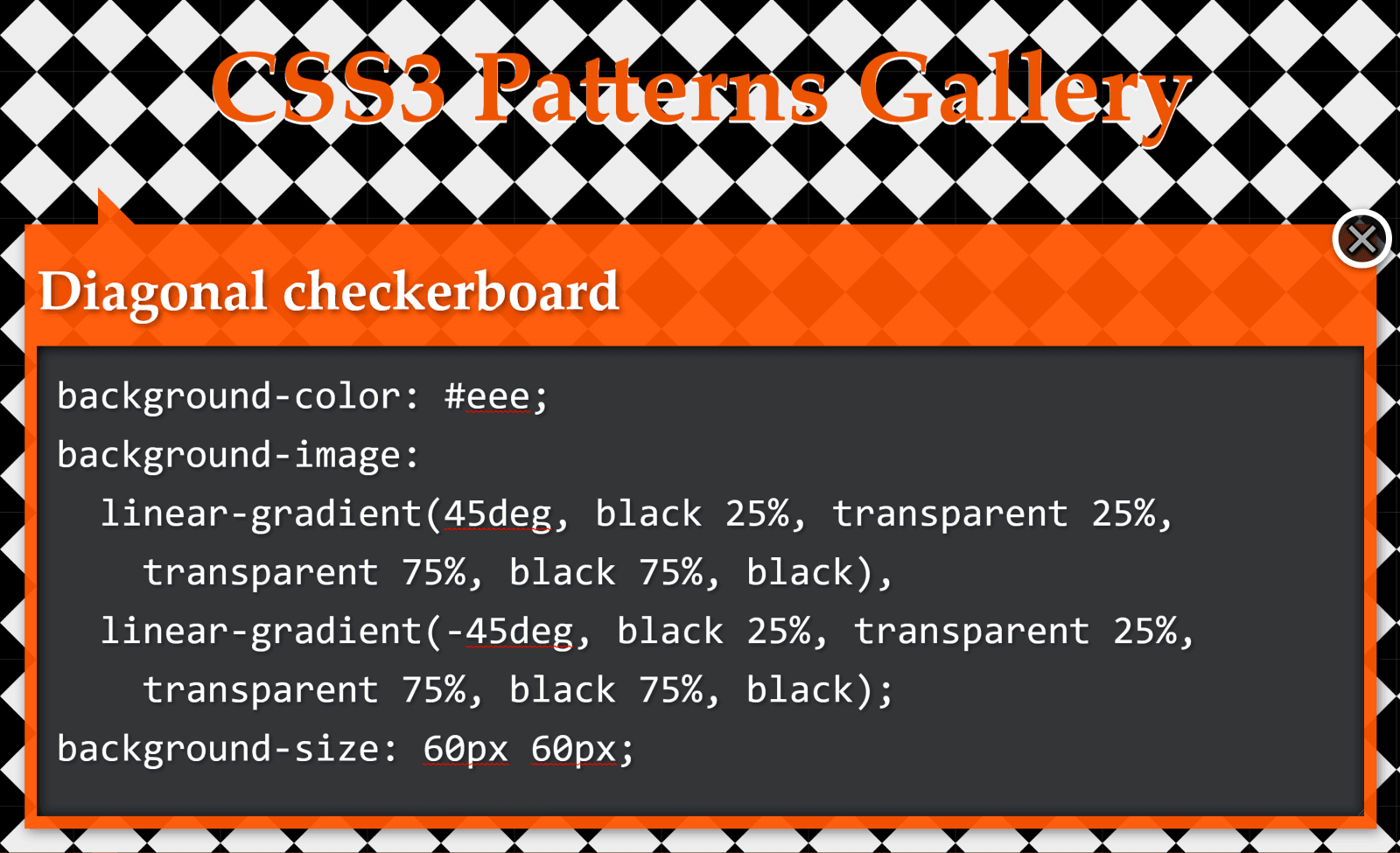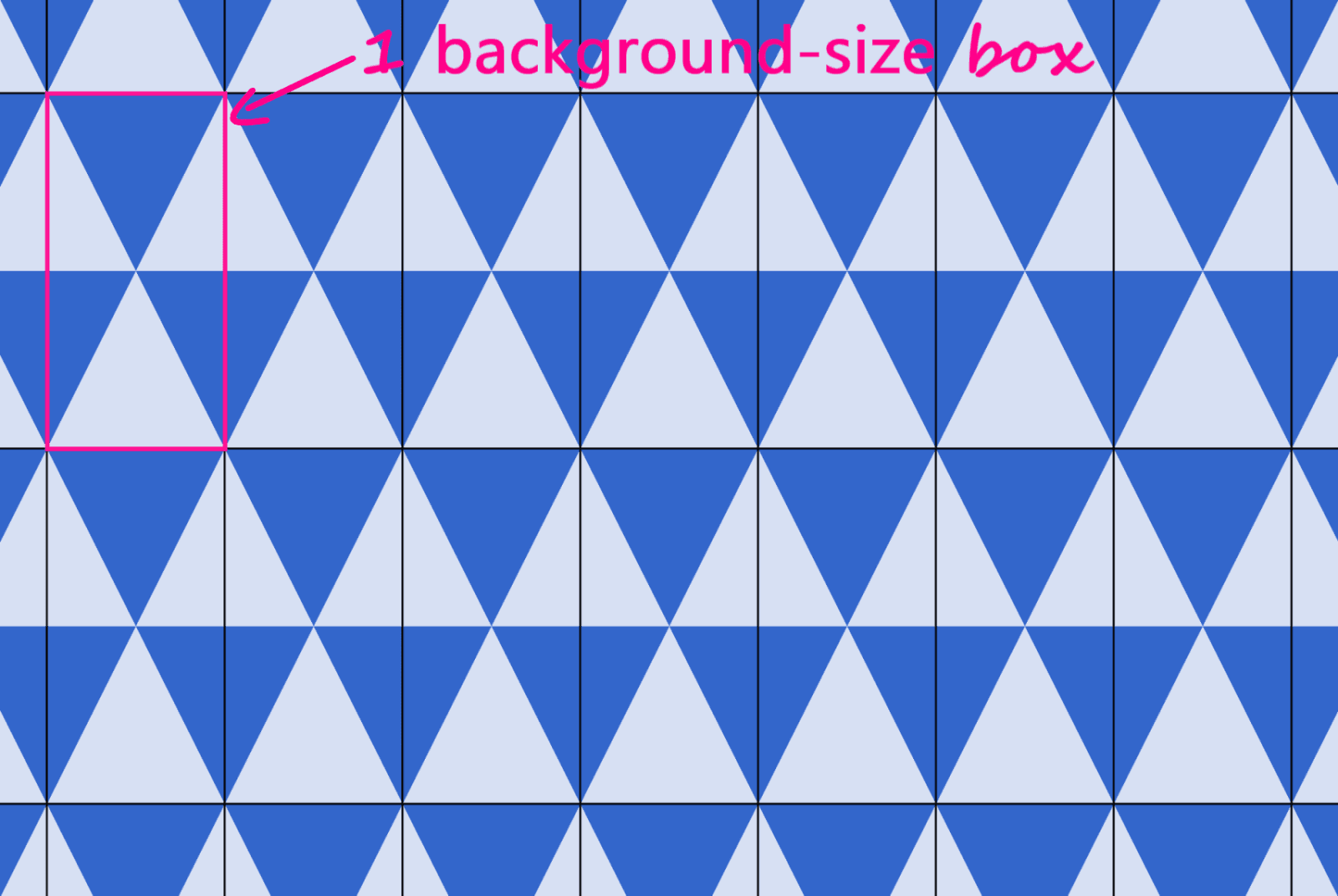
One known way to create repeating background patterns is to use
linear gradients. But if used for the same purpose conic-gradient(), significantly less CSS is required. This advantage of conical gradients is illustrated in the article by several examples taken from the Leah Veru gallery .
We have to consider
- pyramid ornament ,
- ,
- ,
- ,
- .
, Firefox .
75 Firefox, 7 , , about:config, layout.css.conic-gradient.enabled true. — false, .

Firefox 75+
, CSS , Firefox.
. CSS-, .
, , . , 10 linear-gradient(), , , .

:
background:
linear-gradient(315deg, transparent 75%, #d45d55 0) -10px 0,
linear-gradient(45deg, transparent 75%, #d45d55 0) -10px 0,
linear-gradient(135deg, #a7332b 50%, transparent 0) 0 0,
linear-gradient(45deg, #6a201b 50%, #561a16 0) 0 0 #561a16;
background-size: 20px 20px;
CSS, , , . , . , , , , CSS, . , , , , -, , -, .
CSS- conic-gradient() . , !
, background-size, . , , , , . .

, , 12, . 45° , , (25%) .
25% , 45°. .
, :
$s: 20px;
background:
conic-gradient(from 45deg,
#561a16 25%,
#6a201b 0% 50%,
#a7332b 0% 75%,
#d45d55 0%)
50%/ #{$s $s};
CSS , 103 260. , , .
, .
CodePen:

:
background-color: #eee;
background-image:
linear-gradient(45deg, black 25%, transparent 25%,
transparent 75%, black 75%, black),
linear-gradient(45deg, black 25%, transparent 25%,
transparent 75%, black 75%, black);
background-size: 60px 60px;
background-position: 0 0, 30px 30px;, CSS, .
, , , background-size.

, - , , , , 12. , — -, : - .
, 25%, . 50% . C. .
0 100% , repeating-conic-gradient(). 76 CSS 263, 70%:
$s: 60px;
background:
repeating-conic-gradient(#000 0% 25%, #eee 0% 50%)
50%/ #{$s $s};CodePen:

:
background-color: #eee;
background-image:
linear-gradient(45deg, black 25%, transparent 25%,
transparent 75%, black 75%, black),
linear-gradient(-45deg, black 25%, transparent 25%,
transparent 75%, black 75%, black);
background-size: 60px 60px;, :

, . , , 45° .
, , :
, , .
, :
b$s: 60px;
background:
repeating-conic-gradient(from 45deg,
#000 0% 25%, #eee 0% 50%)
50%/ #{$s $s};CodePen:
, : 83 SS 229.
( )

:
background: #36c;
background:
linear-gradient(115deg, transparent 75%, rgba(255,255,255,.8) 75%) 0 0,
linear-gradient(245deg, transparent 75%, rgba(255,255,255,.8) 75%) 0 0,
linear-gradient(115deg, transparent 75%, rgba(255,255,255,.8) 75%) 7px -15px,
linear-gradient(245deg, transparent 75%, rgba(255,255,255,.8) 75%) 7px -15px,
#36c;
background-size: 15px 30px;, , .

, : , . , , . :

, . , , , .
, . , . β. . .
, β. ( ) α, ( ) — 2·α. ( ) , 180° (50%) . ( ) 180° + α, ( ) — 180° + 2·α, .
α β ()
, , :
tan(α) = (.5·h)/(.5·w) = h/w;(w) (h) , α β:
α = atan(h/w)
β = 90° - α, :
$w: 15px;
$h: 30px;
$a: atan($h/$w)*180deg/pi();
$b: 90deg - $a;
$c0: #36c;
$c1: #d6e0f5;
html {
background:
conic-gradient(from $b,
$c1 0% $a,
$c0 0% 2*$a,
$c1 0% 50%,
$c0 0% 180deg + $a,
$c1 0% 180deg + 2*$a,
$c0 0%)
0 0/ #{$w $h};
}, 157 CSS 343. :
, , Sass-.
, 2*$a 50% (180deg) $a, , $a 60deg, . CSS 100 :
$a: 60deg;
$b: 90deg - $a;
$w: 15px;
$h: $w*tan($a);
$c0: #36c;
$c1: #d6e0f5;
html {
background:
repeating-conic-gradient(from $b,
$c1 0% $a, $c0 0% 2*$a)
0 0/ #{$w $h}
}:
:

, , , , , , .
, , , background.
(x,y). β, , . , α, 50% (180°) 180° + α.
, , CSS-:
.panel {
background:
conic-gradient(from var(--b) at var(--xy),
var(--c0) var(--a), var(--c1) 0% 50%,
var(--c2) 0% calc(180deg + var(--a)), var(--c3) 0%);
}(--xy), (--b), (--a) --c0 --c3.
.panel {
/* same as before */
&:nth-child(1) {
--xy: 80% 65%;
--b: 31deg;
--a: 121deg;
--c0: #be5128;
--c1: #ce9248;
--c2: #e4c060;
--c3: #db9c4e
}
/* similarly for the other panels */
}Instead of hard-coding the values of the specified parameters, you can generate random values or get them from an object using CSS and HTML preprocessors. In the latter case, you can apply the built-in styles, which I did in my demo on Codepen:
In this example conic-gradient(), CSS variables are used as arguments , so the demo does not work in browsers that do not support them.
This concludes the article. I hope you enjoyed it and gave you some idea of how you can make your life easier with tapered gradients.